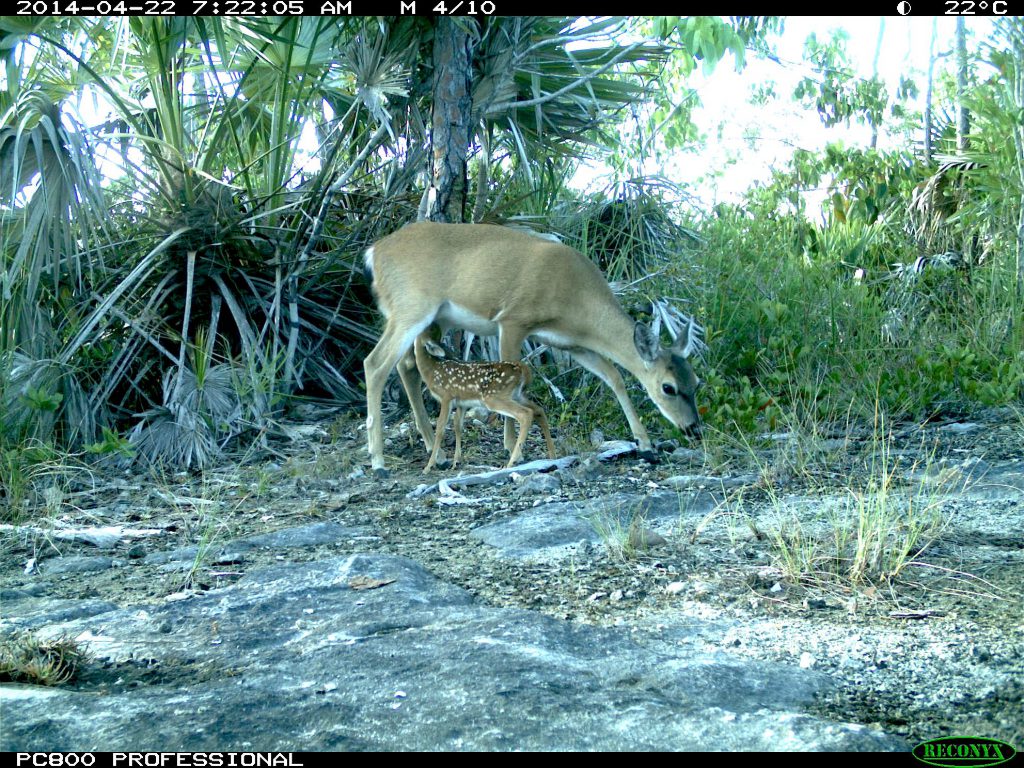About now a doe is searching among the shrubs and grasses. She is looking for a site to have her fawns.
White-tailed deer fawn season will peak in the summer across the Florida Panhandle. In the first weeks of life, fawns are not able to follow their mother and spend most of their time bedding. Although vulnerable, fawns can still rely on remarkable adaptations to survive. Their spotted coat provides excellent camouflage amidst the dappled sunlight filtering through the vegetation. To avoid being detected by predators, newborn fawns also have minimal scent and the ability to suppress their respiratory and cardiac systems when predators are nearby.
In addition to these critical adaptations, vegetation cover is essential to provide fawns the protection they need from predators. A lack of ground cover makes fawns very easy for predators to see, spots or not. This cover is also critical to protect fawns from heat, especially during Florida hot summers. Ideal fawning sites have thick and abundant vegetation. In particular, early successional sites where forbs (i.e., broad-leaved herbs) and native grasses are abundant are the perfect hiding cover for fawns. While forbs and grasses are important components of fawn cover, forbs can also help improve mother’s and fawns’ nutrition. In fact, forbs can be rich in crude protein and nutrient content, with some forbs reaching more than 30 percent crude protein content. The summer is a period of exceptionally high nutritional stress for mothers and fawns, and access to high-quality forage promotes fawn nutrition and growth. Because the mothers do not usually move far from their fawns, fawning sites rich in forbs can keep mothers healthy, and provide good forage for fawns.
Knowing the challenges fawns face, here are three things you can do to help:
First, if you find fawns, do not approach them – they are most likely not abandoned! Mothers leave fawns alone to avoid attracting predators close to the fawn bedding area, but they visit them throughout the day to nurse. Interacting with the fawn may cause them stress and, if fawns are relocated by humans, they may be permanently separated from their mothers.
Second, do not mow or pay close attention when mowing. Mowing can remove good fawn cover or, worse yet, endangering fawns.
Third, it is essential to promote good fawn cover. Landowners and managers can promote fawn cover by establishing or maintaining existing early successional sites such as forest openings. Thinning and prescribed fire can go a long way to promote this vegetation structure. However, remember that it takes time for the vegetation to respond and regrow after management practices have been applied. For example, mothers with fawns will likely avoid freshly burned areas unless they are close to other areas with better cover.
Helpful links to learn more:
EDIS white-tailed deer fact sheet: https://edis.ifas.ufl.edu/publication/UW121
Fire University Podcast, Fire as a tool to increase nutrient availability for fawns and lactating does: https://fireuniversity.libsyn.com/episode-27-fire-as-a-tool-to-increase-nutrient-availability-for-fawns-and-lactating-does-ft-dr-bronson-strickland
Deer University Podcast, Predator impacts: https://deeruniversity.libsyn.com/predator-impacts-part-2

- Longleaf Pine Savannas: Fall Flower Walk - September 13, 2024
- A New Camera Trap Monitoring Program for Private Landowners - September 15, 2023
- Why white-tailed deer have spots - May 26, 2023
